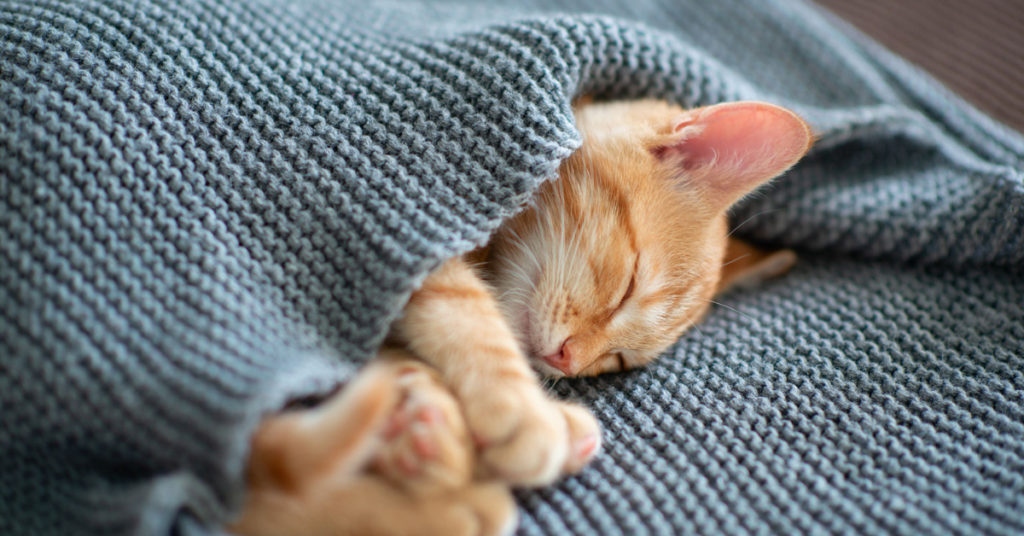Cat intelligence is often defined as the capacity of domesticated cats to solve problems and adapt to their environment and many factors impact the level of cat intelligence. Domestic cats are fascinating creatures that have been living alongside humans for thousands of years. They are known for their agility, independence, and their ability to catch mice and other rodents. However, many people wonder about the intelligence of domestic cats. Are they smart animals, or are they just cute and fluffy pets?
The truth is that domestic cats are highly intelligent creatures that are capable of a wide range of behaviors and cognitive abilities. Humans that have raised cats often marvel at their Cat’s antics and stunts around the house. Cats are one animal that just naturally looks wise. Here we take a look at interesting facts about the intelligence of cats.
10 Interesting Facts about Cat Intelligence
#1) Cats have a high density of neurons in the cerebral cortex – Cats have approximately 300 million neurons compared to dogs with 160 million neurons. This high-octane brain power fuels feline intelligence. The cerebral cortex governs higher functions of rational thought, problem solving. and is also the storage area for short-and long-term memory. Cats, dogs, and humans all have a cerebral cortex. In humans, the cerebral cortex contains 21 to 26 billion neurons, or nerve cells. Cats have about the same amount of brain cells in their cerebral cortex as brown bears despite having cerebral cortexes that are ten times smaller than brown bears (source: 2017 study in Frontiers of Neuroanatomy).

#3) Cats have a proportionally larger cerebellum – which makes sense since body awareness, balance, and coordination are key for their day-to-day needs like jumping, hunting, climbing, and stalking prey. The cerebellum is key for balance and regulating movement.
#4) Cats excel at procedural memory – like humans, cats learn by observation and doing. Examples include opening doors, ringing bells, and turning on light switches. Cats excel at this form of procedural memory. Research has shown that these memories last 10 years or more. Cats associate the memory of an event or place with the emotions they experienced in the surroundings or locations. For example, cats will remember experiencing traumatic stress, pain or fear in the veterinarian’s exam room. They also remember positive experiences (especially when food or play is involved). If your cat watches you open the cabinet enough times, they will often learn to open cabinets and drawers all by themselves. Kittens learn by watching their mothers hunt, eat, and groom. This form of learning continues as they evolve into adult cats.

#6 Cats recognize their human’s voice – researchers played cats recordings of either their pet parents or strangers calling their name. The cats were most responsive to the voices of their pet parents. But rather than meowing or getting up to find them, they just moved their head or ears around (2013 study published by Animal Cognition).
#7) Cats bond with their Humans – Cats are often thought of as solitary animals, but they are actually quite social creatures. They communicate with each other using a variety of vocalizations and body language, and they are able to form complex social bonds with other cats and even with humans. Domestic cats also display a high degree of emotional intelligence. They are able to read the emotions of their owners and other cats, and they respond to these emotions in appropriate ways. For example, a cat may purr and rub against its owner when it senses that they are feeling sad or anxious.
Research published in Current Biology support that cats can actually bond with their human parents after all. When kittens and cats were separated from their pet parents and then reunited with them, they displayed “distinct attachment styles toward human caregivers.” Many were more relaxed and willing to explore the room when their loved one was nearby. These behaviors indicates a sense of attachment to their human and makes them feel secure. Both cats and kittens showed about the same level of attachment to caregivers as children and dogs did.


#10) A Cat’s brain requires stimulation and bored cats cause trouble – As we have domesticated cats, many of their innate behaviors and cat intelligence tend to suffer in indoor environments. This can lead to cats turning their boredom into bad habits. It is important to provide cats with interactive play and plenty of stimulation in their environments. A window perch that faces an outdoor bird feeder is perfect entertainment for a cat.

In conclusion, domestic cats are highly intelligent creatures that are capable of a wide range of behaviors and cognitive abilities. They are skilled problem-solvers, have a high degree of social and emotional intelligence, and are able to learn and remember complex tasks and experiences. So the next time you interact with your furry feline friend, remember that they are more than just cute and cuddly pets – they are intelligent creatures with a lot to offer!
Remember to “share” these cat intelligence facts with other Cat fans. For entertaining cat videos, “subscribe” to our CatFancast Channel on YouTube.


